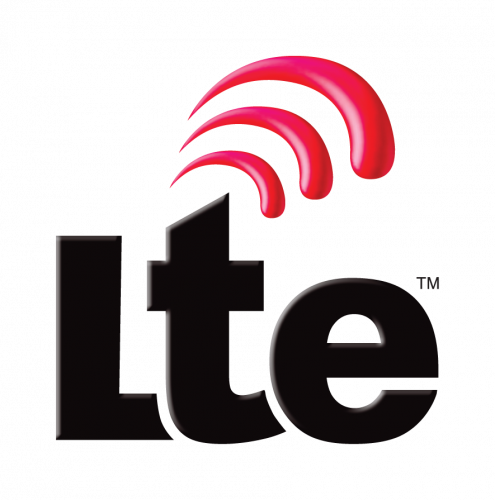Right now, most Internet of Things (IoT) devices seem to rely on WiFi or Bluetooth to obtain a connection to the internet. These protocols are ubiquitous in most modern homes and cities. While they are great for providing connection for home automation, biometric monitoring, and city-wide measuring devices, they have a number of shortcomings when it comes to providing "last mile" coverage.
The last mile (or "last kilometer") refers to the final leg of telecommunications networks that provide service to end users. The issue with WiFi and Bluetooth is that they are generally short-range radio networks. With enough power, they can make line-of-sight links at over a mile, but that also usually requires the end device to also have a powerful transmitter to create a two-way connection.
A few technologies have been gaining popularity for providing multi-mile (multi-kilometer) coverage for things like farms and remote measuring devices. Let's look at three.
LoRa
Short for "Long Range," LoRa and its MAC-layer protocol LoRaWAN is a type of communication for Low-Power Wide-Area Network (LPWAN) designed for low bit-rate communications over long distances, which is perfect for many IoT applications (think remote sensors). LoRa operates below 1 GHz and uses direct sequence spread spectrum, which allows for a longer range than WiFi (assuming same transmit/receive power) and reduced interference. In Europe, LoRa can be found in the 863-870 MHz band and around 915 MHz in the United States (remember cordless phones? Well, that ISM band has become much quieter over the years).
Semtech is one of the leading companies driving development in LoRa, and they set up test base stations (gateways) in Munich, Germany, a few years ago. According to the LoRa Alliance technology page, LoRa can support anywhere between 0.3 to 50 kpbs, depending on the number of devices on the same network.
LoRa is closed source, but some savvy DIYers have connected gateways to Raspberry Pis to create personal LoRa networks.
Sigfox
Sigfox is a French company started in 2009 focused on building long-range, low-power wireless networks for IoT. Similar to LoRa, Sigfox operates around 868 MHz in Europe and 902 MHz in the US. Sigfox has partnerships with Texas Instruments (TI), Silicon Labs and ON Semiconductor to help produce hardware.
Sigfox technology uses what they call "ultra narrow band," meaning communication bandwidth is only 100 Hz in their respective bands. It supports between 100-600 bps, depending on the region of operation, and messages can contain up to 12 bytes in the payload for upload (device to base station), and 8 bytes for download (base station to device). Unlike LoRa, Sigfox does not provide private base stations for private uses, which means you're out of luck if your area does not have coverage.
Here is a great article comparing LoRa and Sigfox.
Cellular
Even cell carriers want a piece of this LPWAN pie. Last year, the 3GPP (3rd Generation Partnership Project -- the collaborative body of telecommunication companies that set standards for things like GSM, 3G and LTE) announced several new categories of LTE ("Long-Term Evolution," which is often marketed as "4G LTE"). These technologies include EC-GSM-IoT, LTE MTC Cat M1 and NB-IoT. Each of these have different features, but are intended to support more devices per base station with lower data rates (like the dozen biometric sensors we each plan to have cybernetically implanted at some point...).
The slowest of these is Cat NB1, which supports up to 250 kbps but has a reported latency of 1.6-10 seconds (forget gaming on your IoT device). The upside of these new categories is that the infrastructure already exists for areas with cell coverage. However I'm sure I'll have to sign a two-year contract for each IoT device.
An overview of the new categories can be found here, and if you'd like to read a more in-depth overview of the technology, here is 3GPP's white paper.
Others
Certainly other last-mile technologies exist when you really need to get data out from remote areas (Iridium anyone?). For your personal projects you have a few options, including maximizing your WiFi, creating your own LoRa gateway or using existing 3G cellular communications. What other ways can you recommend for communicating with devices out of WiFi range?









Hi @all, for the LoRa thing have a look at thethingsnetwork.org they seem to try to get it as open as possible:
quote from No Permission Required - Founders’ Letter
Hi Shawn. I think there is another technology that's gaining popularity and didnt make your list. Have you heard of RPMA (Random Phase Multiple Access)? Ingenu ( formerly onramp wireless I think ) is the sole provider of this proprietary technology which boasts very large coverage areas and ultra low power consumption. They even claim the client device can be some distance underground. They seem to be in direct competition with Sigfox and have similar data rates and narrow band transmission. I'd be interested to hear your opinion on this technology. As a maker I'm not fond of the business model (its hard to get hardware out of them unless you have a legitimate large scale business proposition or are an academic researcher ) but from what I can gather the technology itself is interesting.
For the US there are numerous low power unlicensed radios. Bands used are 900 Mhz, 2 Ghz and 5 Ghz. All of them are spread spectrum as required by the FCC. Most have serial and some have Ethernet capacities. All of them are will probably be too expensive for hobbyists. Some manufacturers: Freewave, Cal-Amp. Johnson Dataradio, GE MDS. Cisco sells some high end units that feature Ethernet capabilities.